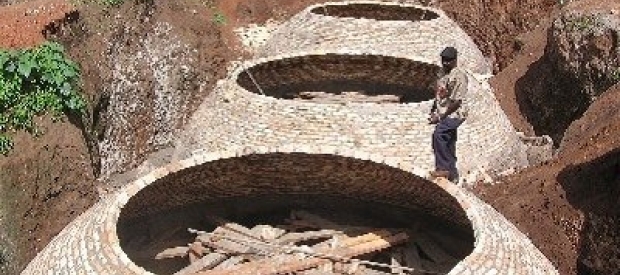China’s Nuclear Backlash Fosters Local Power
When Ding Jie, a water program officer for Wuhu Ecology Center, travelled to Wangjiang County, in China’s Southern Anhui province, to examine local water pollution cases this spring, she encountered something surprising. Ding was amazed to learn of Wangjiang's popular protest movement against a nuclear plant being built in neighboring Pengze, across the Yangtze, in Jiangxi province. Wangjiang is located downstream of Pengze, where Jiangxi's first nuclear power plant was underway.
Pengze was poised to be the first nuclear power station in an inland province. However, the Chinese government halted its construction after Japan's Fukushima nuclear accident in March 2011.
Local opposition at Wangjiang, led by retired local governmental officials, has been strong. When Ding Jie shared information about the protest movement with her office colleagues in Wuhu, she learned that their city is also proposing a nuclear power plant.
Southern Anhui is a mostly rural agricultural region, and so the investment in intensive megaprojects like nuclear power appears to make little sense, especially given local water constraints and the high liability that nuclear plants bring.
Even with growing demand for energy, inland provinces like Anhui and Jiangxi do not seem to have a crushing need for nuclear power. The incentive for local authorities appears to be that the construction of nuclear power plants poses a lucrative business opportunity.
Wuhu Ecology Center decided to try to empower local communities with decentralized energy supply practices. In one of the center’s project areas along the Qingyi River, Xiuli Village is using the "pig/marsh-gas/tea" ecological model – a circular agriculture practice that generates gas from pig waste in a clean, simple biogas digester, which is used for cooking and electricity. Each household also grows organic tea with this method, which benefits from the fertilizer by-product of the digesters. The cost of construction is around $700 per household. Subsequently, trees around the village are thriving again as villagers no longer have a need to collect fuel wood.
Such traditional energy projects are not uncommon in China. In the past, Chinese government programs led to a huge rollout of biogas digesters in rural areas, but national programs did not reach every area, and such support may have dwindled in recent years. Thus, NGOs and private business are well positioned to help promote such indigenous knowledge and scale up good practices.
While high-profile environmental protests in Dalian, Shifang and Qidong were able to stop risky projects at the local level, is a growing need to promote alternative energy solutions to deter government and industry's excuses for more megaprojects such as big dams and nuclear plants.
"Four nuclear power plants are being proposed in Anhui province alone. It is a bit too much," said a local governmental official of Wuhu. "Can we stop one, at least the one in Wuhu?"
His words would be called “nimbyism” (“not in my back yard”) in the West, but they represent many Chinese people's thinking that China is going too far, too fast in its rush to build large, dirty energy projects that can do more harm than good to local communities in their path. But as the "pig/marsh-gas/tea" model shows, there is a better way. The growing movement to build clean community-run energy projects is leading the way.
Japan Goes Geothermal Post-Fukushima |
- Wen Bo is the Program Director for the National Geographic Society Air and Water Conservation Fund. Contact him at china-conservation@ngs.org




